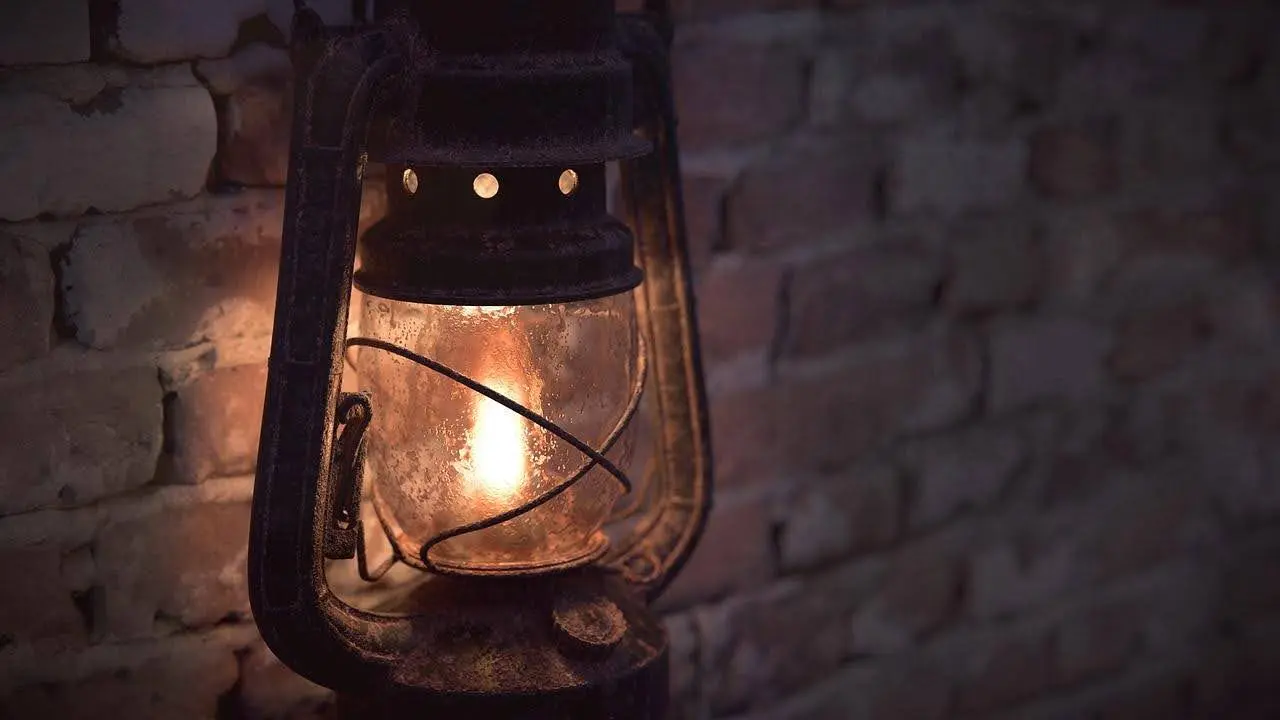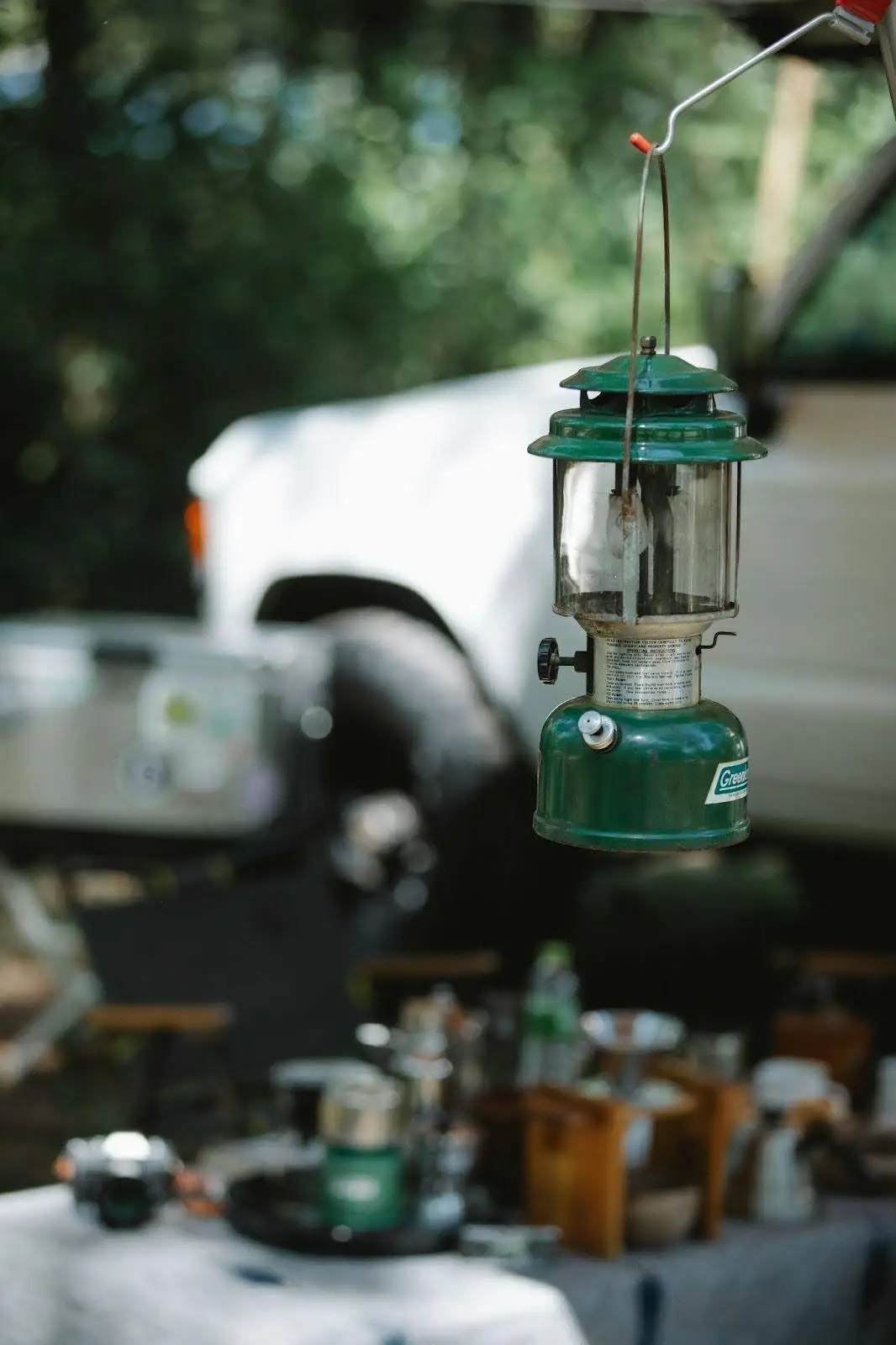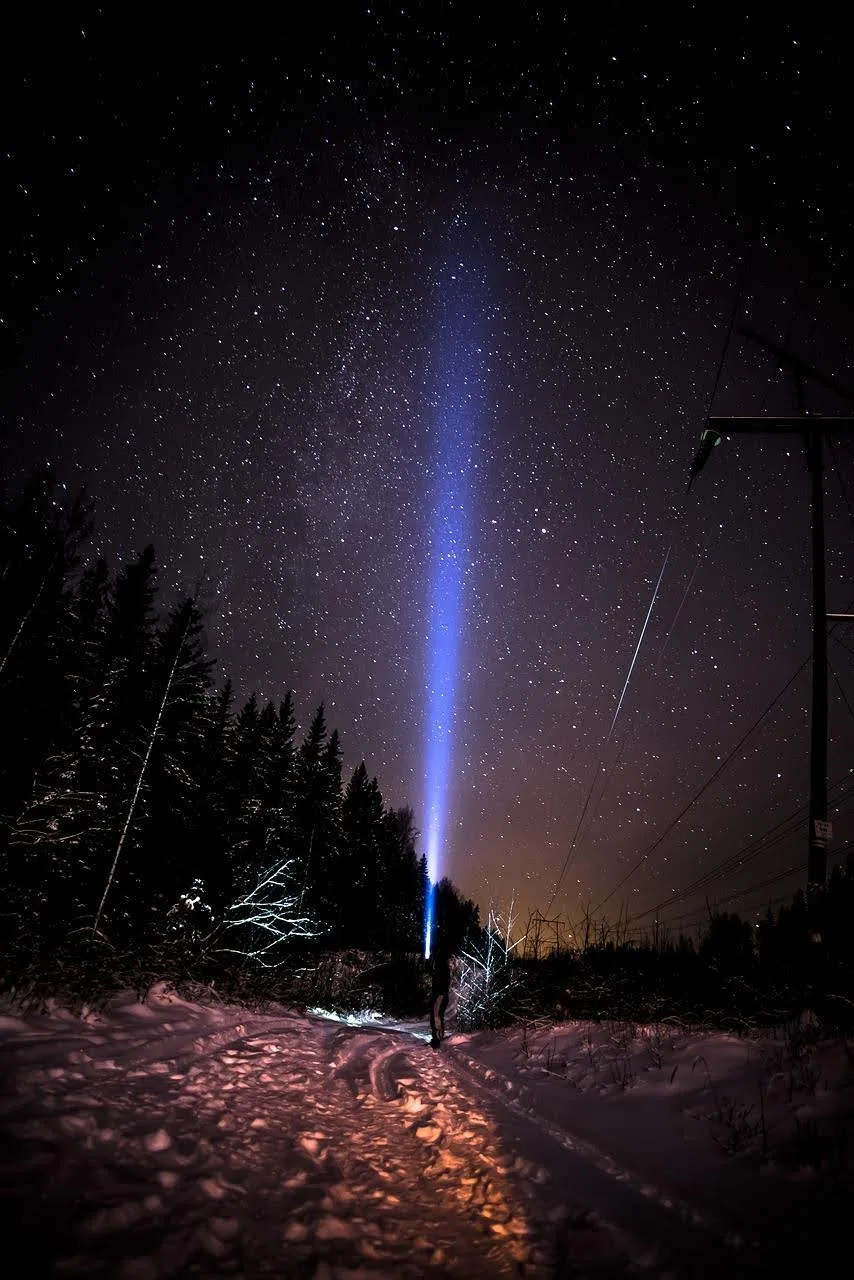When venturing into the wilderness, the sun’s descent brings a new set of challenges and adventures. Proper lighting not only ensures safety by illuminating potential hazards and deterring wildlife but also adds convenience for tasks like cooking or map reading.
Beyond practicality, the right lighting can enhance the overall camping experience, creating a cozy ambiance that complements the starry sky. Over time, camp lighting has evolved significantly. What began as traditional campfires, essential not just for light but warmth and cooking, has transitioned into an era where modern gadgets offer versatile, convenient, and ecological lighting options.
This guide will illuminate five types of lighting options for campers, ranging from the everlasting campfire to contemporary solar-powered lights, each fitting different needs and scenarios of outdoor escapades.
Table of Contents
Candle Lanterns
Historically, candle lanterns have served explorers and campers as a reliable source of light far before the advent of battery-powered gadgets. These simple, yet effective tools have illuminated many a traveler’s path and campsite with their soft, flickering glow. In their modern incarnations, candle lanterns have been redesigned for enhanced safety and efficiency, incorporating features such as protective glass and ventilation to minimize the risk of fire.
Advantages
One of the most compelling aspects of candle lanterns is the ambient light they provide, casting a warm, gentle illumination that many find comforting in the great outdoors. This traditional light source appeals to those who value simplicity and the charm of yesteryears. Additionally, candle lanterns are celebrated for their low environmental impact and cost-effectiveness, using renewable resources like beeswax or soy candles that are both biodegradable and easily replenished.
Disadvantages
Despite their appeal, candle lanterns come with inherent limitations, notably their limited light output, which pales in comparison to LED or gas-powered alternatives. Additionally, while modern designs have increased safety, the open flame still poses a fire hazard, requiring vigilant supervision and responsible use.
Best Use Cases
Candle lanterns shine brightest (figuratively speaking) in scenarios that favor atmosphere over intense illumination, making them ideal for short trips, back-to-nature minimalist camping, or simply as supplementary lighting to create a soothing ambiance around the campsite.
Propane Lanterns
Propane lanterns operate by igniting propane gas, which flows from a canister attached to the lantern, to produce a steady, bright light. The gas is directed towards a mantle; a small, fabric mesh soaked in metallic salts. When the propane burns, it heats the mantle to incandescence, thereby emitting light. This mechanism is simple but highly effective, providing a consistent and powerful source of illumination that far surpasses the capabilities of traditional candle lanterns.
Advantages
The most significant benefit of propane lanterns lies in their high luminosity, making them particularly suitable for group activities and camping where a broader area needs to be illuminated. These lanterns are renowned for their durability and reliability, often weathering harsh outdoor conditions without faltering. Given their built-in fuel source, they can offer uninterrupted lighting, which is critical in remote or wilderness settings.
Disadvantages
However, the need for propane refills presents an inconvenience, as it requires users to carry additional canisters, which can add to the load, especially for those keen on minimizing their gear. Additionally, propane lanterns are generally heavier and bulkier than their candle or battery-operated counterparts, making them less practical for backpackers or those with limited carrying capacity.
Best Use Cases
Given their characteristics, propane lanterns are recommended for base camps, RV camping, and situations where carrying extra weight is not an issue. They also excel in emergencies or situations requiring high-intensity, reliable lighting over an extended period, underscoring their value to outdoor enthusiasts who prioritize functionality and performance over portability.
Solar Lanterns
The rise of solar technology in outdoor gear represents a significant shift towards sustainable and environmentally friendly solutions for adventurers and campers alike. Solar lanterns have become increasingly popular due to their reliance on renewable energy, capturing sunlight to provide illumination once the sun sets.
Advantages
Solar lanterns stand out for their eco-friendly nature, eliminating the need for carrying fuel or worrying about emissions. They are cost-effective over the long term, removing the expense related to buying propane or batteries. Many solar lanterns are designed with additional features such as charging ports for devices, making them a versatile tool for the modern camper.
Disadvantages
One of the main drawbacks of solar lanterns is their dependency on weather conditions for recharge. They require a significant amount of sunlight to function effectively, which can be problematic in overcast or rainy conditions. Furthermore, they generally produce lower light output compared to fuel-based lanterns, which might not be suitable for all camping needs.
Best Use Cases
Solar lanterns are perfect for backpackers and eco-conscious campers who prioritize minimal environmental impact and self-sufficiency in their gear. They are also ideal for travelers seeking lightweight and multifunctional tools, as solar lanterns can lighten their load and provide essential functionality in remote locations.
Battery Powered Headlamps
Battery-powered headlamps offer the ultimate convenience for campers and adventurers, allowing for hands-free operation that is invaluable in numerous situations. Their design specifically caters to the needs of those requiring illumination while engaging in tasks that necessitate the use of both hands, such as cooking in the wild or setting up tents after dusk.
Advantages
The most significant advantage of battery-powered headlamps is their versatility and the freedom of movement they provide. Being lightweight and portable, they are an essential tool for any outdoor enthusiast. Their ability to light up the area directly in front of a user without needing to hold a flashlight adds to their practicality and usability in various scenarios.
Disadvantages
One of the drawbacks of using battery-powered headlamps is the need for constant maintenance in terms of battery replacement or recharging, which can be inconvenient during extended outdoor activities. Additionally, some users may find wearing headlamps for long periods uncomfortable, especially if the headlamp is particularly bulky or poorly fitted.
Best Use Cases
Battery-powered headlamps are suited for every type of camper, but they’re particularly beneficial for those who prioritize mobility and practicality in their gear choices. They shine in scenarios where having both hands free is a necessity, not just a convenience, making them an indispensable tool for night-time explorers and those setting up camp after dark.
Hand-crank Lanterns
Hand-crank lanterns work by converting manual kinetic energy into electrical energy, which then powers the lantern’s light. This is achieved through the user turning a crank for some time and storing energy in the lantern’s built-in battery. Their primary appeal to survivalists and outdoor enthusiasts lies in their independence from traditional power sources, making them a reliable option in virtually any situation.
Advantages
The most significant advantage of hand-crank lanterns is their self-sufficiency, requiring no external power sources or fuel to function. This makes them incredibly sustainable and eco-friendly. Additionally, many models come equipped with emergency features, such as built-in radios or sirens, enhancing their utility in survival situations.
Disadvantages
Despite their numerous benefits, hand-crank lanterns have some downsides. The most notable is their lower light output compared to battery-powered or fuel-based options, which can be a limitation in environments requiring intense illumination. Furthermore, the need for physical effort to recharge the lantern can be inconvenient and tiring, especially during extended use.
Best Use Cases
Hand-crank lanterns are an ideal addition to any emergency kit or survival gear, offering reliability in scenarios where other light sources may fail. Their self-sufficiency and built-in emergency features make them particularly suitable for use in disaster preparedness, remote camping trips, and any situation where ensuring a reliable light source is paramount.
Conclusion
Selecting the right lighting for your camping adventure is akin to choosing the perfect soundtrack for a road trip; it can enhance the experience, ensure safety, and set the mood for unforgettable memories. However, it’s crucial to consider your camping style, whether it be solo treks into the wild unknown or cozy, family outings in well-trodden campgrounds.
The size of your group and the impact you wish to have on the environment also play a significant role in this choice. Ultimately, the goal is to create a campsite environment that is as comfortable as it is safe, ensuring that the only shadows cast are those of joyful moments shared under the tender glow of your chosen light. Like guiding stars in the night sky, the right lantern leads the way to harmony with nature, illuminating paths to both adventure and serenity.













